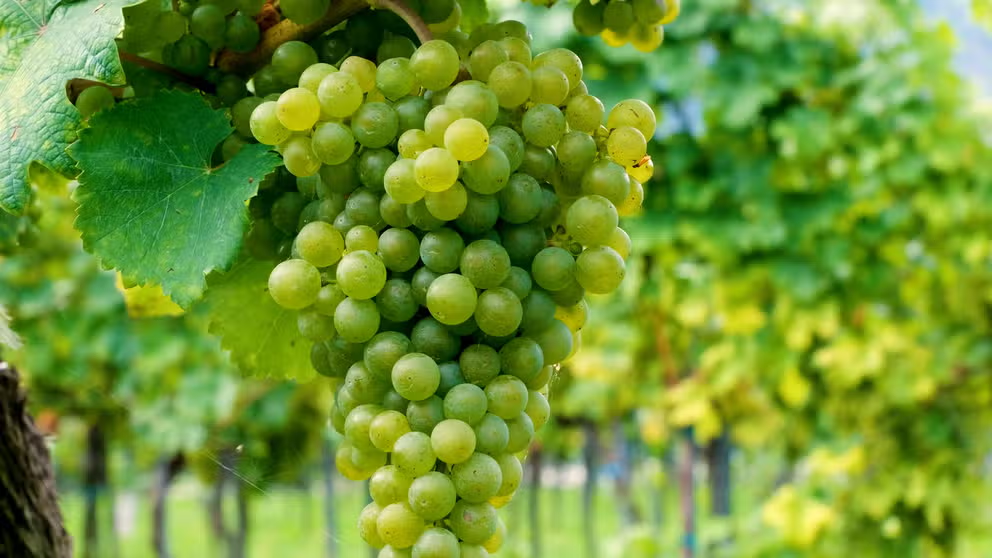Napa Valley winery destroying vines to get ahead of the changing climate
Opus One’s winemaker has his eye on future weather and climate changes to make sure that nothing in the bottle changes.
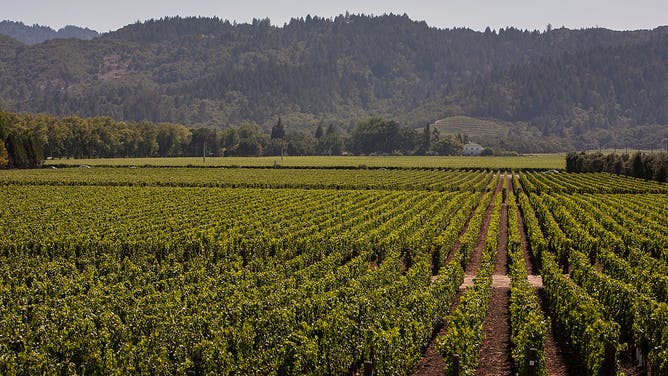
One of the Opus One vineyards which encompass 170 acres in Napa Valley.
(George Rose/Getty Images / Getty Images)
NAPA, Calif. – After periods of record warmth, rainfall and drought, Napa winemakers have taken notice of erratic weather and climate swings. One actually destroyed vines to develop a vineyard able to take on those extremes.
"We don't know [what’s going to happen] with climate change. Are we going to have really hot weather and drought or are we going to have lots of rain?" said Michael Silacci, Opus One Winemaker and President of the Napa Valley Grapegrowers Association. "And my gut feeling is we're going to have both."

Silacci surveys the vines' progress.
(Barbara Munker/picture alliance via Getty Images / Getty Images)
He wants to get ahead of the climate so he and Opus One's Director of Viticulture ripped out over 12 acres of vines and are taking their time to redevelop it. Opus One, a storied collaboration in Napa Valley of Robert Mondavi (now Constellation Brand) and Baron Phillippe Rothschild (Mouton Rothschild) is a premier California brand, valued worldwide.
He and consulting soil scientists looked deep underground and overhead for answers. Native rootstock and shade, he is hoping will net the perfect combination to combat more weather extremes like heavy rain, more heat and seasonal drought that he feels may be more a rule than an exception in the future.
HOW WEATHER CAN IMPACT WINE PRODUCTION
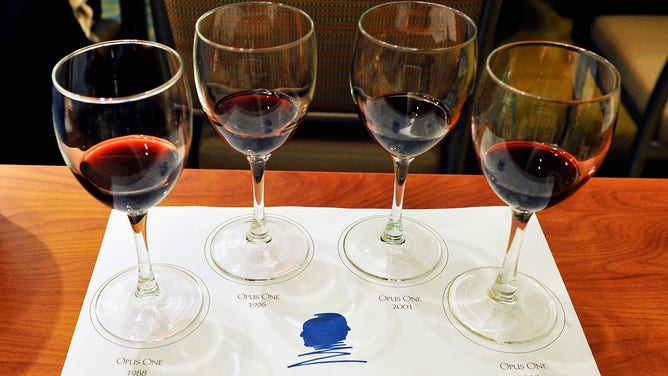
An Opus One wine tasting at a past Boston Wine Expo.
( Paul Marotta/Getty Images / Getty Images)
"So we need a rootstock, which is a Native American plant that would go plunge its roots deep through the two or three horizons of soil to do one of two things," explained Silacci. "If it's, a very wet year, it will help pump water out of the soil to dry it. If it's very droughty, if it's very hot and dry, no water, the roots will be deeper and it could get to moisture in the clay layers."
Horticulturalists for centuries have been grafting different varieties of fruits onto the main trunk or rootstocks.

Wax protects a newly grafted vine.
(Anne-Laure CAMILLERI/Gamma-Rapho via Getty Images / Getty Images)
He said most of the above-ground vines in the U.S., except some on the East Coast, are Vitis vinifera, native to Europe. These are the Chardonnay, Cabernet Sauvignon and Zinfandel varietals we are all familiar with. California wine families tell stories of their ancestors smuggling cuttings into California from their homeland, hidden in luggage or disguised as wreaths. They planted their New World, California vineyards with Old World vines to create familiar wine in an unfamiliar place.

Opus One ages their premier wines in oak barrels in a climate controlled room.
(George Rose/Getty Images / Getty Images)
Unfortunately, that place came with unfamiliar terroir (climate, weather and soil) too, making the crop susceptible to nature.
"They are not resistant to phylloxera," explained Silacci, describing the European rootstock. "So we use rootstock that are native to the United States because they're resistant to the pest phylloxera."
NAPA VALLEY 2020: THE LOST VINTAGE
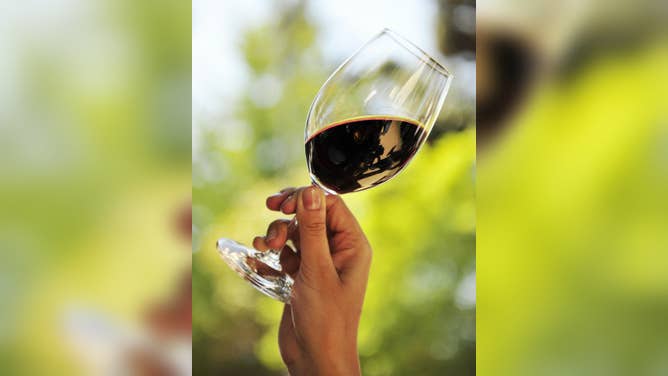
(MARTIN BERNETTI/AFP via Getty Images / Getty Images)
Phylloxera, a small sap-sucking insect, feeds on the roots and leaves of grapevines. The North American native severely cuts down on grape production and eventually destroys the plant. The bug accidentally introduced to Europe in the 1800s decimated or caused growers to rip out the vines across both Europe and the U.S. and continues today.
By 1869, phylloxera destroyed 40% of southern and central France’s vines.
Native American rootstock evolved with phylloxera and are resistant. But the grapes lack the old-world taste. So, horticulturalists experiment with cross-breeding the species and grafting the Old World vines on New World roots.
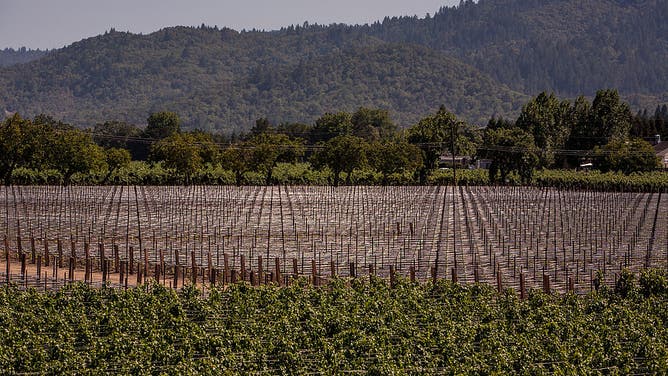
A newly planted cabernet vineyard at Opus One.
(George Rose/Getty Images / Getty Images)
Vineyards attach (graft) vines from European varietals to Native American rootstock to make the entire plant heartier and more adapted to pests and U.S. climate without sacrificing taste.
In addition to pests, wineries like Opus One fear weather and climate changes could change the way they make wine.
NEW SUMMER FORECAST DAMPENS HOPES FOR DROUGHT RELIEF IN WEST
The twelve experimental acres could net the winery an additional 2,500 cases of premium wine for Opus One (based on average yields) -- that’s over one percent of their yield. The current wine offered on their website goes for $445 and $165 per bottle. So, this is a pricey gamble.
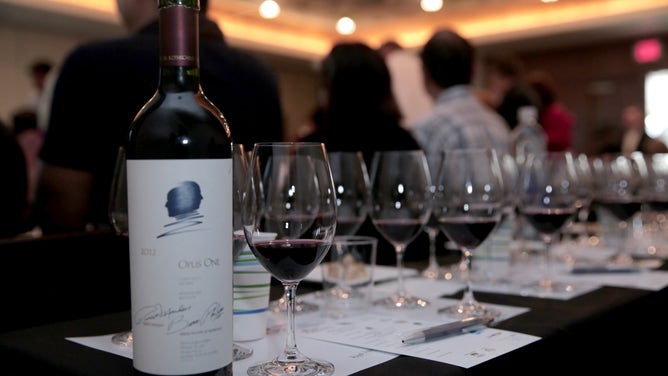
An Opus One tasting at the South Beach Food and Wine Festival.
(Jacqueline Romano/Getty Images for SOBEWFF® / Getty Images)
"Eventually in your career or your life, you start to sense things and you rely more on intuition. Intuition really is an accumulation of experience in your career," said Salacci about the decision. "And that's where you start to look at these things and say, ‘okay’, you think about it, and then you say, ‘yes, we think this will work’. And so if we feel it's worth our time experimenting with, we're going to do it on a larger scale."
In addition to experimenting with the roots’ ability to mine and filter water and resist pests, Silacci experiments with row orientation to the sun. This as a means to protect the plant from severe heat.
HEAT TRAPPED BY GREENHOUSE GASES REACHED THE HIGHEST LEVEL YET IN 2021, SCIENTISTS SAY
How weather impacts your glass of wine
From rain to humidity to hurricanes, a variety of factors can impact the taste and availability of wine.
"There's no rootstock that is heat-resistant or a plant that’s heat-resistant," he said. "Instead we tried] a row orientation that during the hottest part of the day where one row would be shading the clusters of the fruit of the next row."
He planted several rows in different directions from magnetic north. The orientation can mean a row gets full sun broadside during the day if the row is perpendicular to the path of the sun or minimal sun if the row is planted parallel to the path. The less direct sun a plant sees, the less energy absorbed and less heat created. He also added shade cloth to protect the first row.
2021 WAS WORLD'S 6TH-WARMEST YEAR ON RECORD
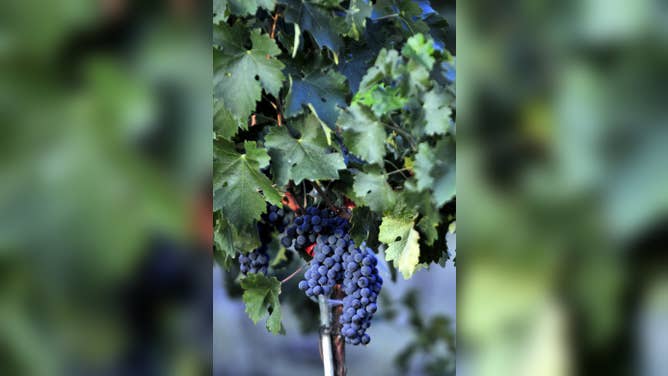
Grape growers graft European vines on native rootstock.
(MARTIN BERNETTI/AFP via Getty Images / Getty Images)
"I know from experience that it takes about five to seven years to see the impact of something you do on the vineyards and in the wine," said Silacci who patiently tends to his experimental vineyard hoping the roots and rows will bring Opus One continued success in his legacy. Until that point, he looks at more ways to conserve water in the third year of drought.
